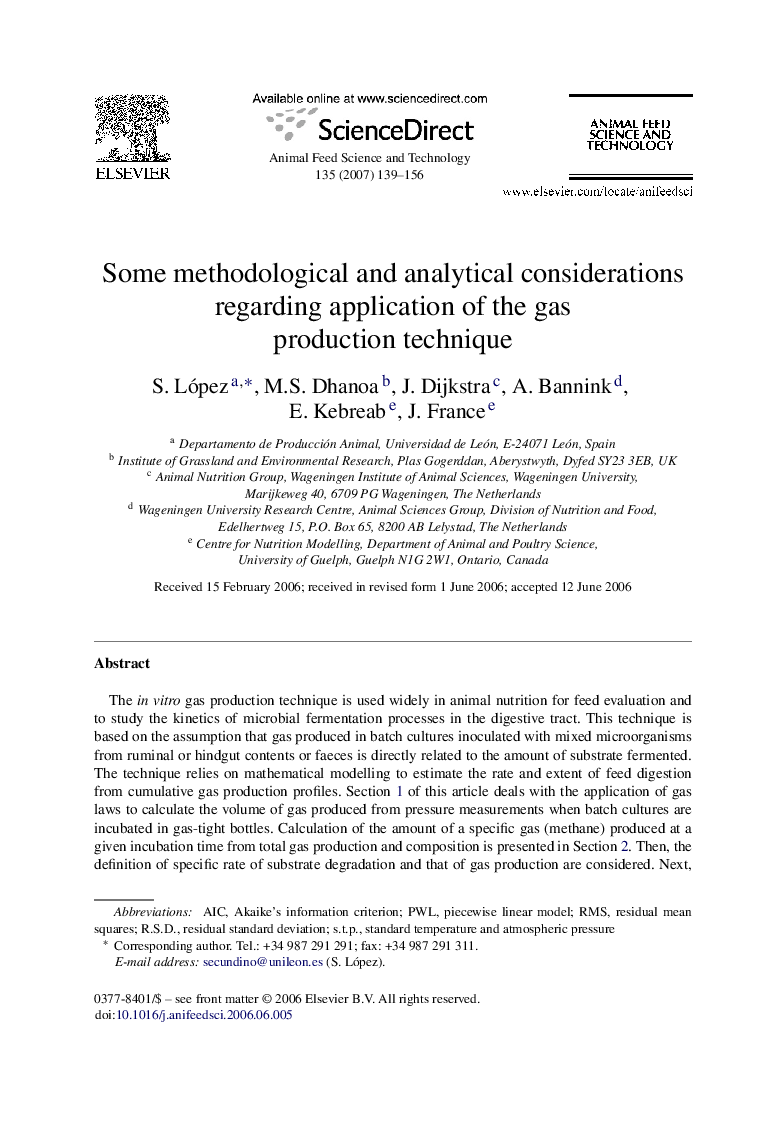| Article ID | Journal | Published Year | Pages | File Type |
|---|---|---|---|---|
| 2420952 | Animal Feed Science and Technology | 2007 | 18 Pages |
The in vitro gas production technique is used widely in animal nutrition for feed evaluation and to study the kinetics of microbial fermentation processes in the digestive tract. This technique is based on the assumption that gas produced in batch cultures inoculated with mixed microorganisms from ruminal or hindgut contents or faeces is directly related to the amount of substrate fermented. The technique relies on mathematical modelling to estimate the rate and extent of feed digestion from cumulative gas production profiles. Section 1 of this article deals with the application of gas laws to calculate the volume of gas produced from pressure measurements when batch cultures are incubated in gas-tight bottles. Calculation of the amount of a specific gas (methane) produced at a given incubation time from total gas production and composition is presented in Section 2. Then, the definition of specific rate of substrate degradation and that of gas production are considered. Next, a piecewise linear model based on the assumption that microbial growth and fermentation follows zero-order kinetics is derived and evaluated by comparison with other non-linear models with regard to goodness-of-fit of experimental data and estimation of rate and extent of degradation in the rumen of some feedstuffs. Finally, the possibility of using procedures to account for the inevitable cyclic trends in gas production profiles by data smoothing are discussed. All these considerations provide an insight into some of the mathematical and methodological aspects of the in vitro gas production technique and should contribute to facilitating the description and interpretation of experimental data.
